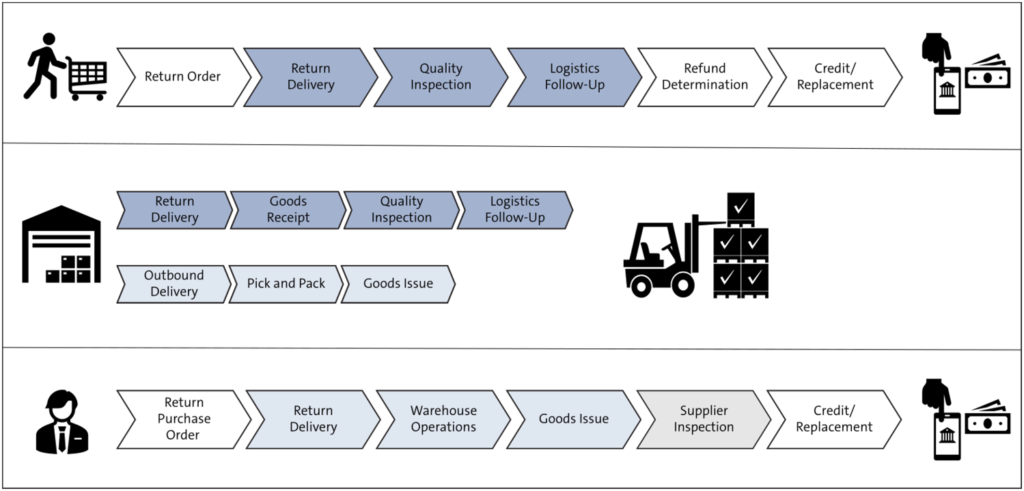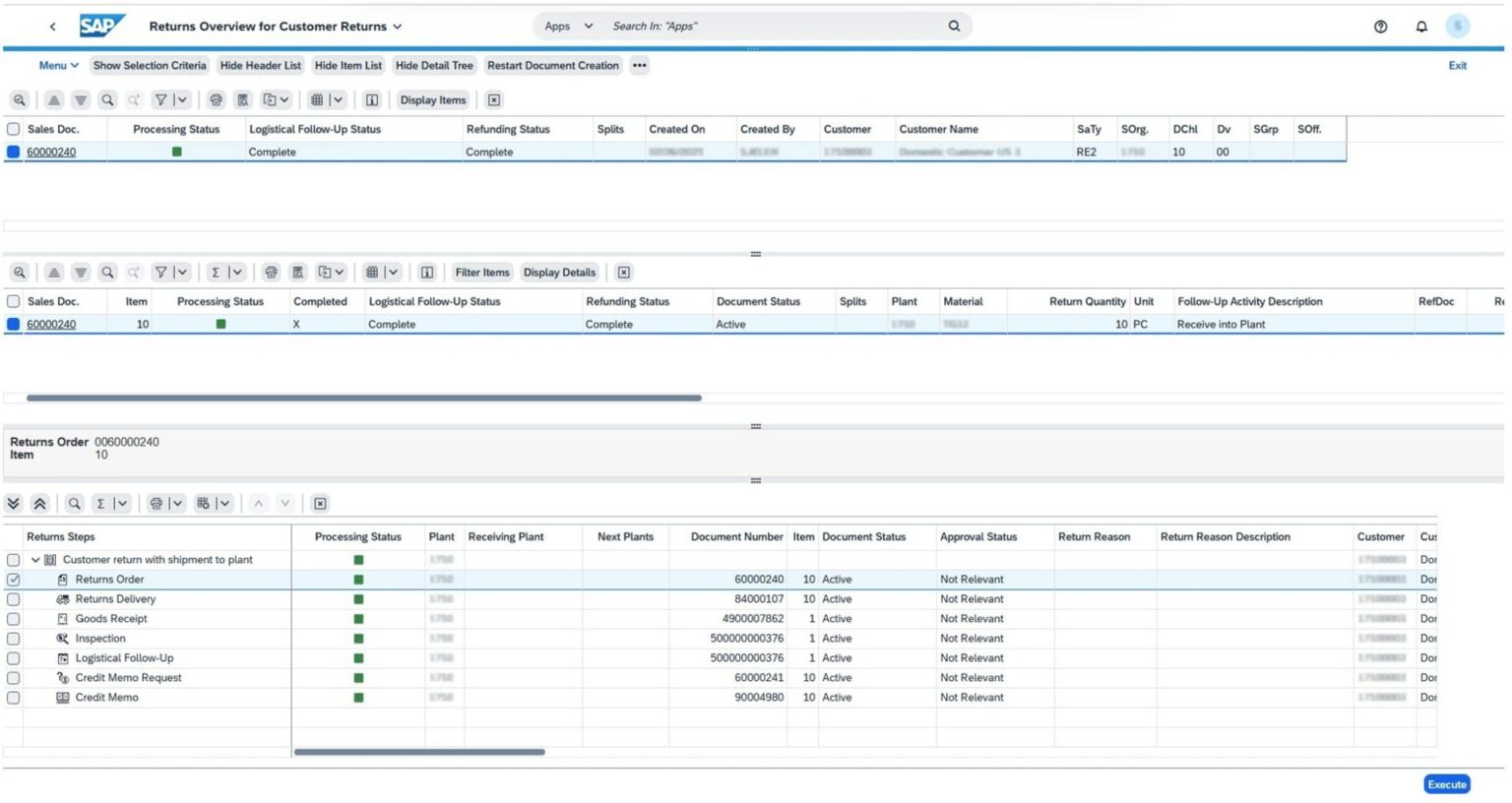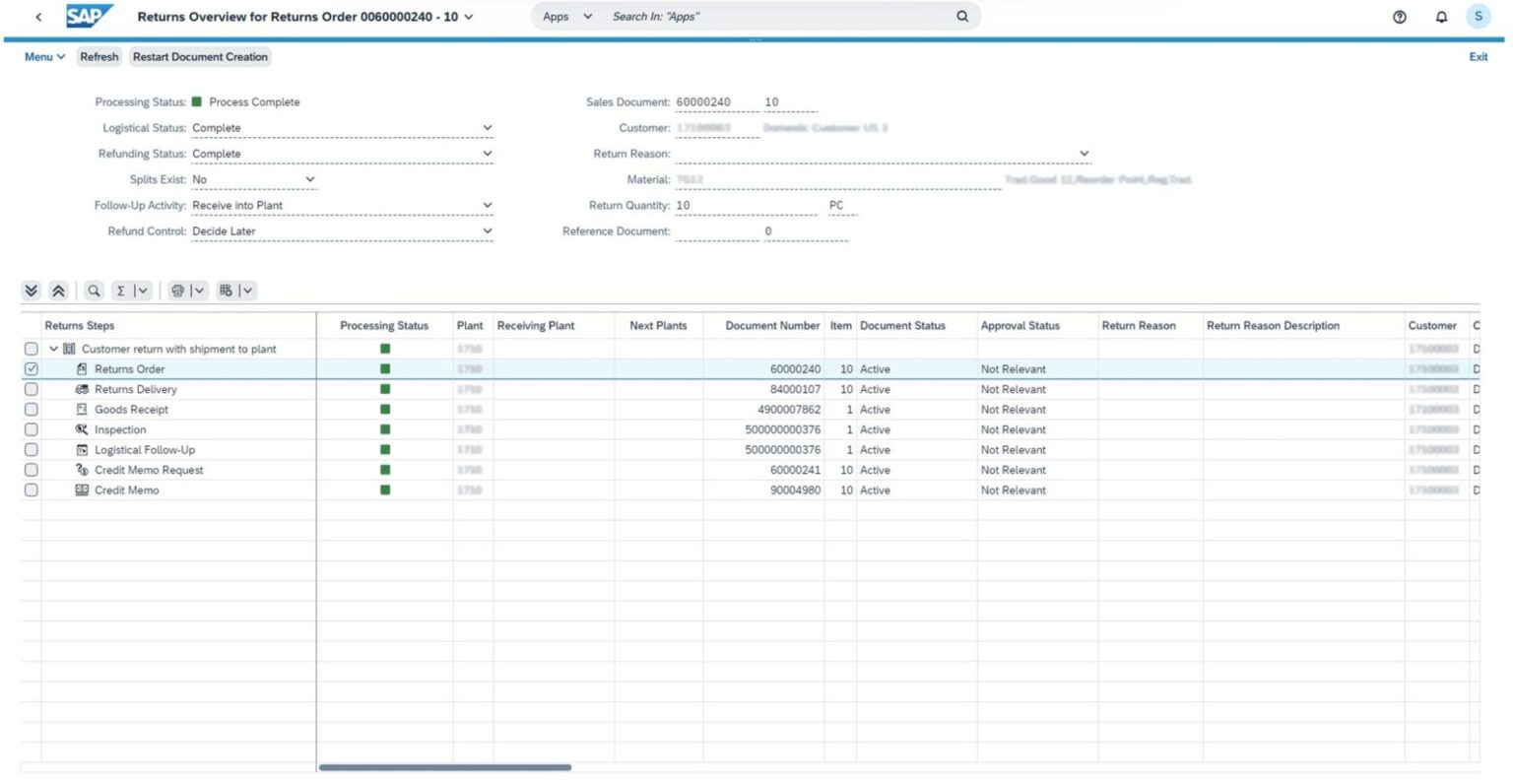What is ARM (Advanced Returns Management)?
The growing complexity of reverse logistics processes poses increasing challenges for businesses. A multitude of logistical tasks and unforeseen events – such as transport damage, order fulfillment mistakes, or production defects – require efficient management. Standard return functions available in SAP SD (Sales and Distribution) and MM (Materials Management) modules often prove insufficient. This is where Advanced Returns Management (ARM) comes in an enhanced solution designed to streamline and optimize the return handling process.
ARM builds on the existing return processes found in the SD and MM modules. While it still relies on return orders or return purchase orders, it introduces additional steps that enrich the process and facilitate seamless integration with other key modules essential to reverse logistics, such as EWM (Extended Warehouse Management) and FI (Financial Accounting). ARM enables processing of customer returns, supplier returns, and internal returns.

How is ARM different from Standard Returns?
In a standard return process, the workflow is limited to registering the return, processing the return delivery, and issuing a refund—without providing visibility into what actually happens with the returned item. ARM extends this process by introducing a dedicated “Returns” tab for monitoring and managing returned goods. The ARM return process consists of:
- Return Order / Return Purchase Order
- Return Delivery
- Inspection
- Follow-Up Activity
- Refund
The most significant differentiators of ARM are the Inspection and Follow-Up Activity steps. Inspection helps determine the reason for the return and can be carried out at four different levels:
- In the warehouse after receiving the returned goods
- By the user during return order creation
- At the customer site before goods are returned
- At the supplier site before goods are shipped
Inspections can be performed within the return order or via dedicated transactions MSR_INSPWH / MSR_INSPV, or through their SAP Fiori equivalents: Enter Inspection Results – From Warehouse / From Vendors. A crucial part of the inspection results is the return reason code, which defines the actual condition of the inspected items. The system allows for configuration and expansion of available entries for this parameter, ensuring process flexibility.

The Follow-Up Activity defines what will happen to the returned product based on inspection results. Depending on the type of inspection, the list of possible follow-up actions is narrowed down. Once the inspection results are confirmed, the system automatically generates the necessary documents reflecting the selected decision. Additionally, the process can be tailored by:
- Expanding the list of available follow-up activities
- Customizing document generation to meet specific business needs
Furthermore, transactions MSR_TRC_C / MSR_TRC_I and corresponding SAP Fiori apps, such as Track Customer Returns / Supplier Returns, enable tracking the return process at every stage. Simplified return overviews are also available directly from the return order or return purchase order, facilitating process monitoring and analysis.


SAP Advanced Returns Management (ARM) is a modern solution designed for effective return management within SAP S/4HANA and SAP ERP. It supports customer returns, supplier returns, and internal processes, ensuring seamless integration with key system modules. With automation and a clear step-by-step approach, ARM enables quick assessment of returned goods, informed decision-making regarding their further handling, and precise financial settlements.
Moreover, ARM offers advanced tools for return monitoring and analysis, helping businesses optimize their return management strategies. Its extensive configuration capabilities make it adaptable to various scenarios and specific business requirements.
Bibliography
[1] Basawaraj Patil, Sri Krishna Raju Kakarlapudi, Introducing Advanced Returns Management with SAP S4HANA (2024)
*SAP®, SAP S/4HANA®, ABAP® are the trademarks or registered trademarks of SAP SE or its affiliates in Germany and in other countries
